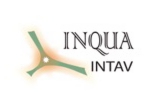EXTRAS: Extending tephras
A long-term aim of INTAV for the next two intercongress periods (2015-2013) is the enhancement of tephrochronology as a global research tool and its application in multiple Quaternary disciplines including geochronology and volcanology. At the same time, we aim to maintain and extend the capability of the discipline and to promulgate its value to the wider community (both scientific and layperson).These aims are encapsulated by an overarching project led by INTAV, through the Stratigraphy and Chronology Commission of INQUA, for the intercongress period 2015-2019, entitled EXTRAS: “EXTending TephRAS as a global geoscientific research tool stratigraphically, spatially, analytical, and temporally within the Quaternary” (“Extending tephras” for short).
EXTRAS will be targeted by members of the new INTAV group through seven core objectives:
- To evaluate and apply new and emerging technologies to identify and map proximal-to-distal tephras, and cryptotephra deposits, and to establish their spatial and stratigraphic interrelationships to facilitate their use as chronostratigraphic units and as a basis for documenting volcanic eruption histories.
- To develop and evaluate new and emerging methods to characterize tephra and cryptotephra constituents mineralogically and geochemically (incl. isotopically) using formalised protocols that enhance data quality and quantity.
- To develop improved age models for tephra and cryptotepha deposits and hence to improve existing age models for key palaeoclimatic, archaeological, and other sequences using tephra and cryptotephras as appropriate.
- To evaluate and develop objective ways of correlating tephra and cryptotephra deposits from place to place using statistical techniques and numerical measures of (un)certainty of correlation.
- To develop regional and ultimately global databases of high-quality mineral, geochemical, and other data (stratigraphic, chronologic, spatial) for tephra and cryptotephra deposits.
- To maintain and enhance the global capability of tephrochronology for future research through mentoring and training of emerging researchers in the discipline
- To improve education to the wider community (outreach) about tephrochronology and its application and relevance.
Contributing to EXTRASAs
As with the earlier overarching project, INTREPID Tephra, which culminated in a very successful issue of Quaternary International volume 246 in 2011 (“Enhancing tephrochronology and its application (INTREPID project): Hiroshi Machida commemorative volume"), EXTRAS will be achieved through inter-INQUA tephra meetings, thematic issues of international journals, and individual publications that relate to at least one of the above objectives.
The INTAV executive welcomes support from individuals or small groups to host workshops or meetings involving tephrochronology and will help by acquiring INQUA and other funding in support of such meetings. Such funding is primarily aimed at encouraging the participation of scientists from countries with low GDP and the involvement of early career scientists. Information about forthcoming meetings involving INTAV and EXTRAS project will be advertised on this website and via JISCMail- Tephra and our Facebook site.
To help us acquire funding, it is very helpful indeed to be able to report publications that acknowledge the EXTRAS project and INTAV/INQUA support. Please consider this request in writing your acknowledgements. At the end of each year, we have to report to INQUA and we will be asking (via JISCMail-Tephra and Facebook) before then for colleagues to advise us of their publications that specifically acknowledge EXTRAS/INTAV.
The payoff is in helping to advance our now-global discipline, and to encourage and support new generations of practitioners and to enhance collaborative studies in a wide range of subjects including paleoclimatology, paleoecology, paleoceanography, volcanology, stratigraphy, geology, geomorphology, paleopedology, paleoanthropology, archaeology, and human evolution.







